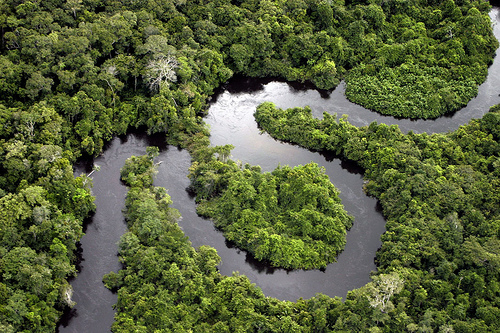Science News
Protecting Forests and More
March 19, 2010

It may seem like a no-brainer, but now it’s official: a study published this week in PLoS Biology confirms that creating and sheltering indigenous lands and protected areas is one of the most effective ways to slow climate change. These areas, known as ILPAs, whether existing or newly established, could be the key to reducing global warming in one simple way—protecting the forests.
According to the study, “Forest clearing and degradation account for roughly 15% of global greenhouse gas emissions, more than all the cars, trains, planes, ships, and trucks on earth.”
One item actually agreed upon at Copenhagen last December was the importance of forest conservation to reduce climate change. An initiative created called REDD—Reducing Emissions from Deforestation and Forest Degradation—calls for wealthy nations to financially support developing nations to protect their forests.
Doug Boucher of the Union of Concerned Scientists and one of the authors of the study puts it this way, “For REDD to succeed, forest nations must develop policies and institutions to reduce and eventually eliminate forest clearing and degradation.”
And the simplest way to begin this seems to be through ILPAs. The authors highlight analyses showing that since 2002, deforestation in the Brazilian Amazon has been 7 to 11 times lower inside of indigenous lands and other protected areas than elsewhere. (A great article in SFGate last fall shows how one Amazonian tribe is using Google Earth to help stop deforestation.)
The scientists from 13 institutions and universities who collaborated on the study recommend ILPAs be instrumental in governmental decisions. “Given this likely policy landscape, nations can use ILPAs to reduce emissions in two ways: first, create new ILPAs in areas facing deforestation risk now and in the foreseeable future; second, strengthen the management of existing ILPAs to reduce ongoing deforestation within and surrounding their borders.”
And the authors mention that protecting these forests will do more than reduce global warming, it can also help protect indigenous cultures and wildlife. A win-win.
Creative Commons image by leoffreitas